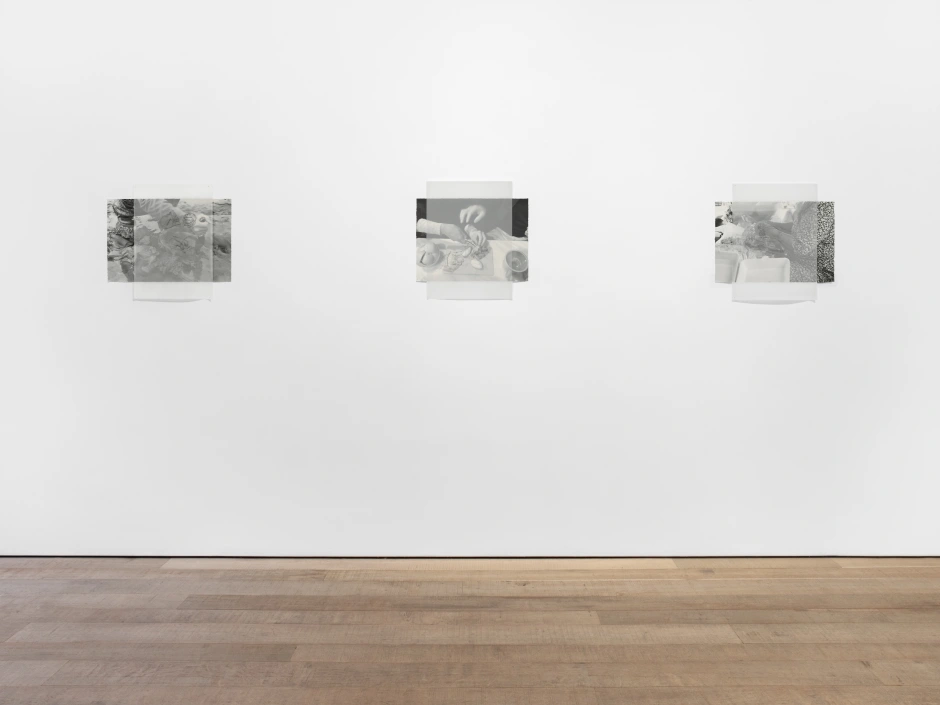'PROTRUDE' AT SADIE COLES
- Avantika Pathania
- Feb 7, 2024
- 3 min read
Updated: Feb 8, 2024
What do we think of when we read the word ‘nature’? Something green, maybe forests and mountains? For the artist Yu Ji, nature takes a broader meaning. In a thought-provoking, juxtaposed interplay between nature, the human body, and the surrounding environment, Yu Ji creates sculptures and other paper works that capture this vivid meaning in her second solo exhibition Protrude at Sadie Coles HQ.
Yu Ji, Jadeite Joint No.1, (2021)
Through her art, Yu Ji captures both the stability and movement of this interplay, highlighting how we exist within and are influenced by our surroundings. This theme is a constant nucleus of the exhibition, offering a unique perspective on the fragility of our connection with nature. The works are characterized by their materials, each chosen for its unique properties and purpose. Ji explores the tension that exists between matter and energy, creating a dialogue between the different elements that make up her pieces. In an interview with Ellen Greig, she emphasized that the materials she uses have “their own charge or energy,” and she learns from them in the process of creation. Her fascination with ruins, abandoned areas, and discarded objects is reflected unconventionally in this exhibition, where she continues to explore these themes.
Yu Ji, Protude at Sadie Coles, Installation View, 2024. Image courtesy of Sadie Coles HQ.
Upon entering the gallery, the viewer is greeted with two tall, abstract-shaped sculptures. These sculptures are striking in their appearance, resembling distorted pillars that seem to bend and twist in unexpected ways. The sculptures and other paper works displayed are majorly monochromatic. Column-Untitled No.3 – 2 (2023) resembles the ancient columns of Greece or Rome, with a worn appearance that suggests the passage of time. Ji drew inspiration from the magnolia flower to create this piece, and the resulting sculpture is both delicate and powerful. Over two meters tall, they're made from soap and concrete, giving them a unique texture and fragility. Despite their size, they seem almost weightless, as if they might topple over at any moment. The artwork captures the essence of stability - something firm, secure, and unchanging - while at the same time showcasing movement, which is fluid, dynamic and ever-changing. The seamless combination of these two contrasting concepts is what makes this artwork captivating.
The sculptures are the result of extensive research, collaboration, and processional fabrication. The work explores the relationship between architecture and nature, pointing out that the built environment is influenced by the physics of the natural world. The building and the body share similarities, with both having skin, a structural core, and a network of interior operations that keep them working together harmoniously. Over time, they change and transform, revealing their losses and gains.
Yu Ji, Study on Gestures, series (2024)
A second series of intricate works on paper, the Study on Gestures series, have been created using a complex layering of original drawings, hand printing, silk screening, and screen-printing techniques, collecting the preparatory materials for the sculptures. These ‘draft’ sketches are now a part of the exhibition and have become actual artworks for the first time. These sketches helped her keep track of her creative process and while she traveled more than she was used to.
In the beginning, the artworks and the sculptures do not seem related, being of different themes. However, as Yu Ji’s works are usually an interplay between nature and environmentalism, she delicately establishes a connection between everything that is on display. There is a lot of reciprocity in what she sees in nature and she aims at incorporating nature and the surrounding environment in her works. Rather than dominating nature and attempting to keep it at bay, the works in this exhibition contend that we could learn from nature and attune to its disposition. Protrude captures the essence of the human experience and encourages us to contemplate the power and fragility of our own bodies.
Avantika Pathania is a writer based in London with an interest in fashion, and modern and contemporary art.











